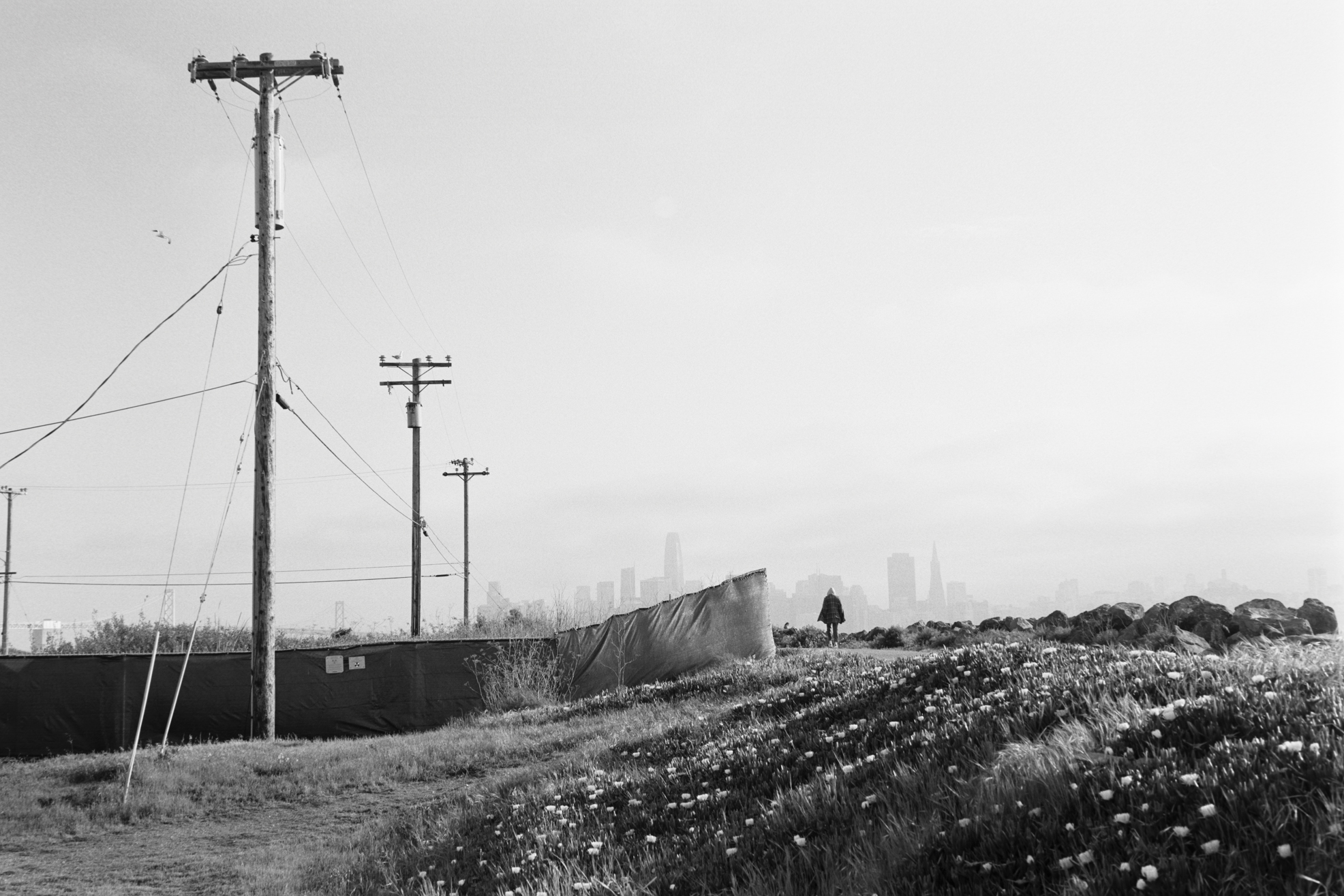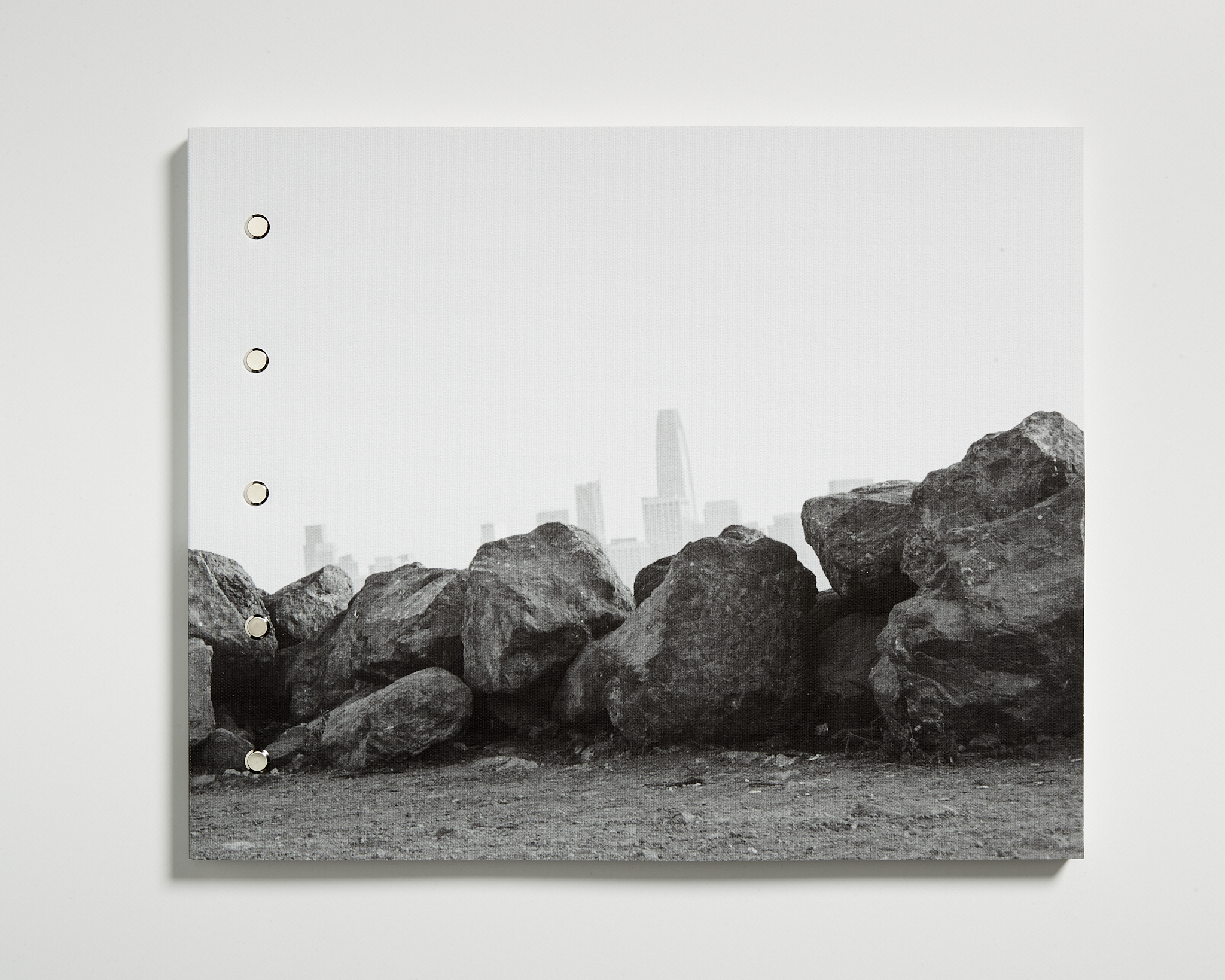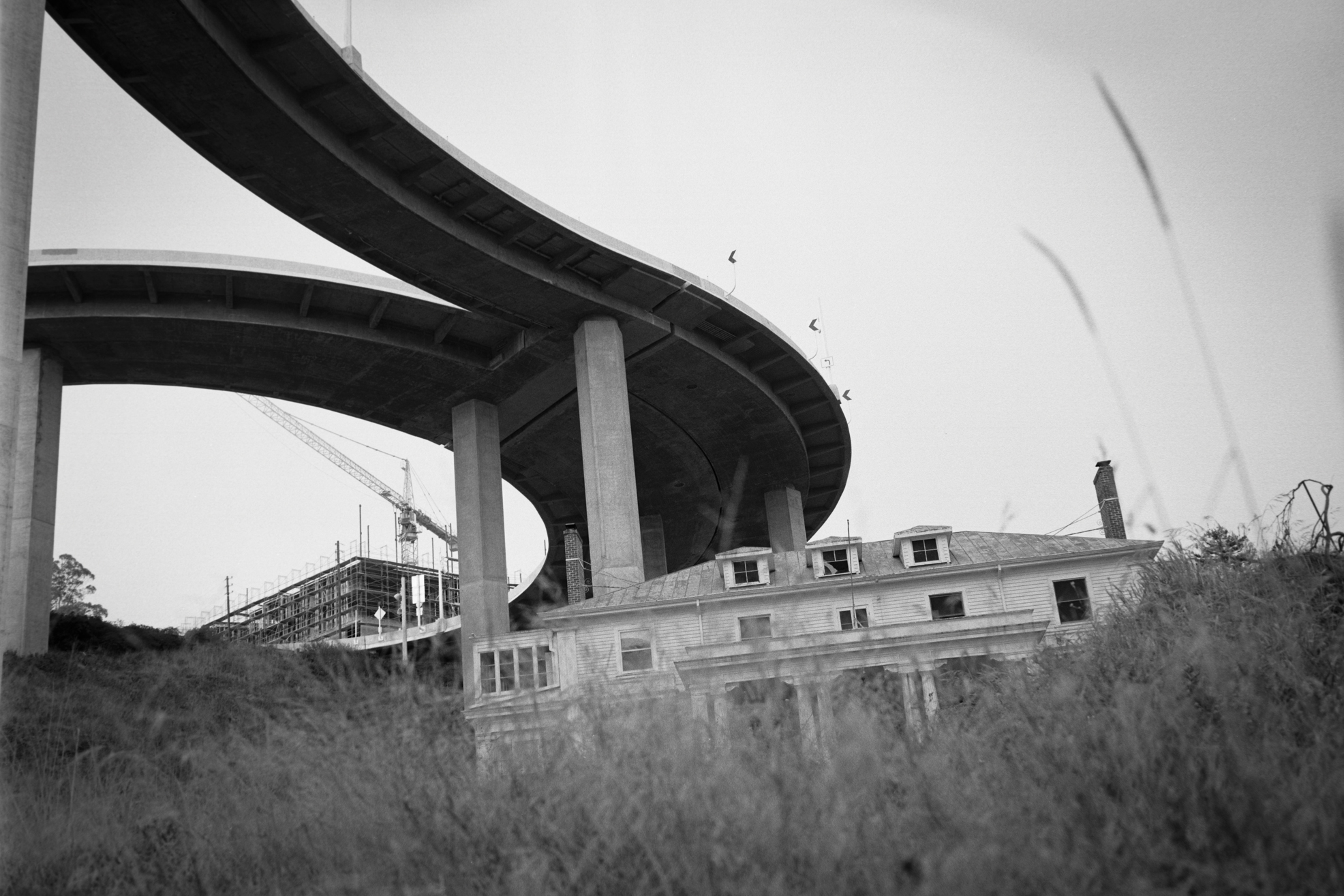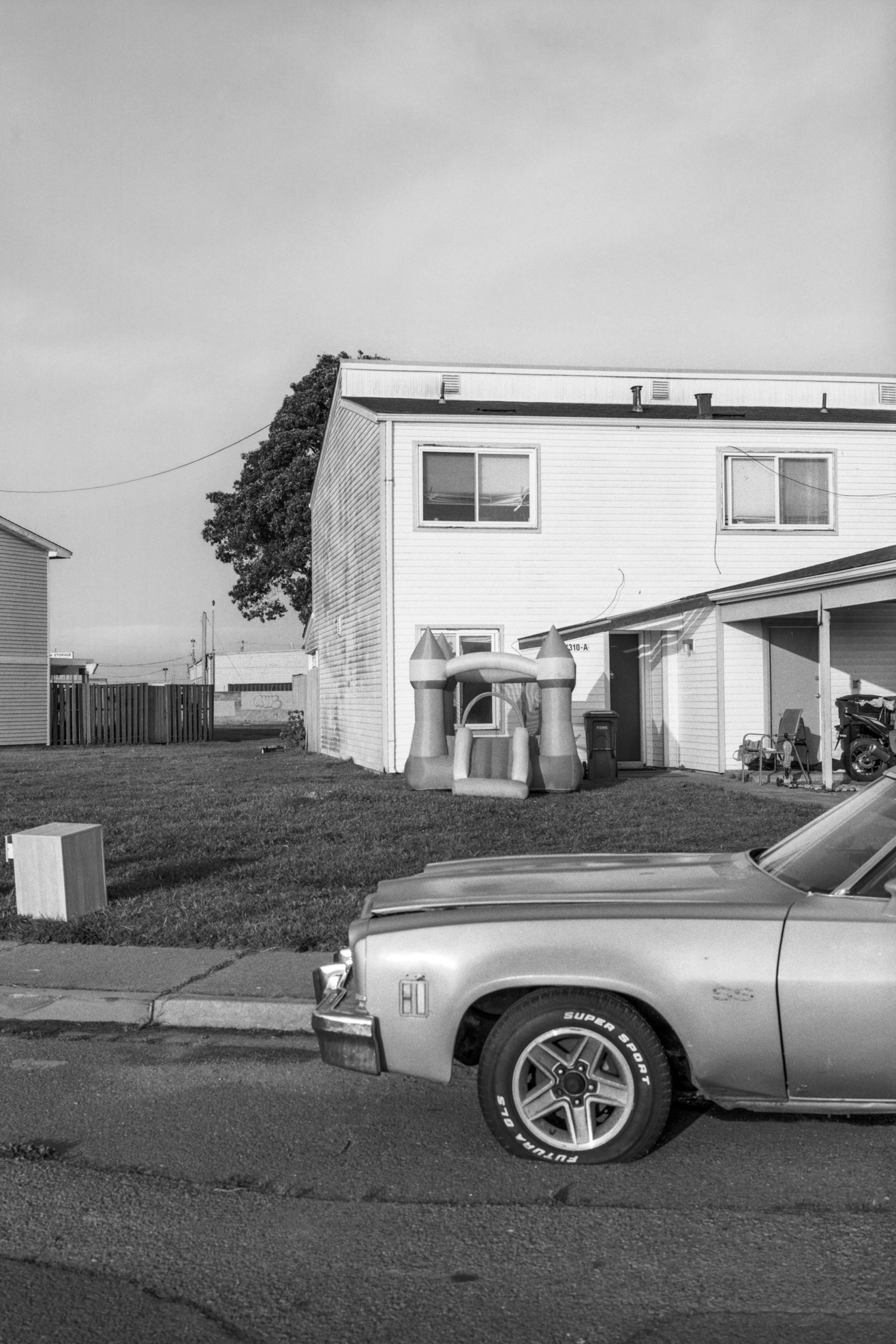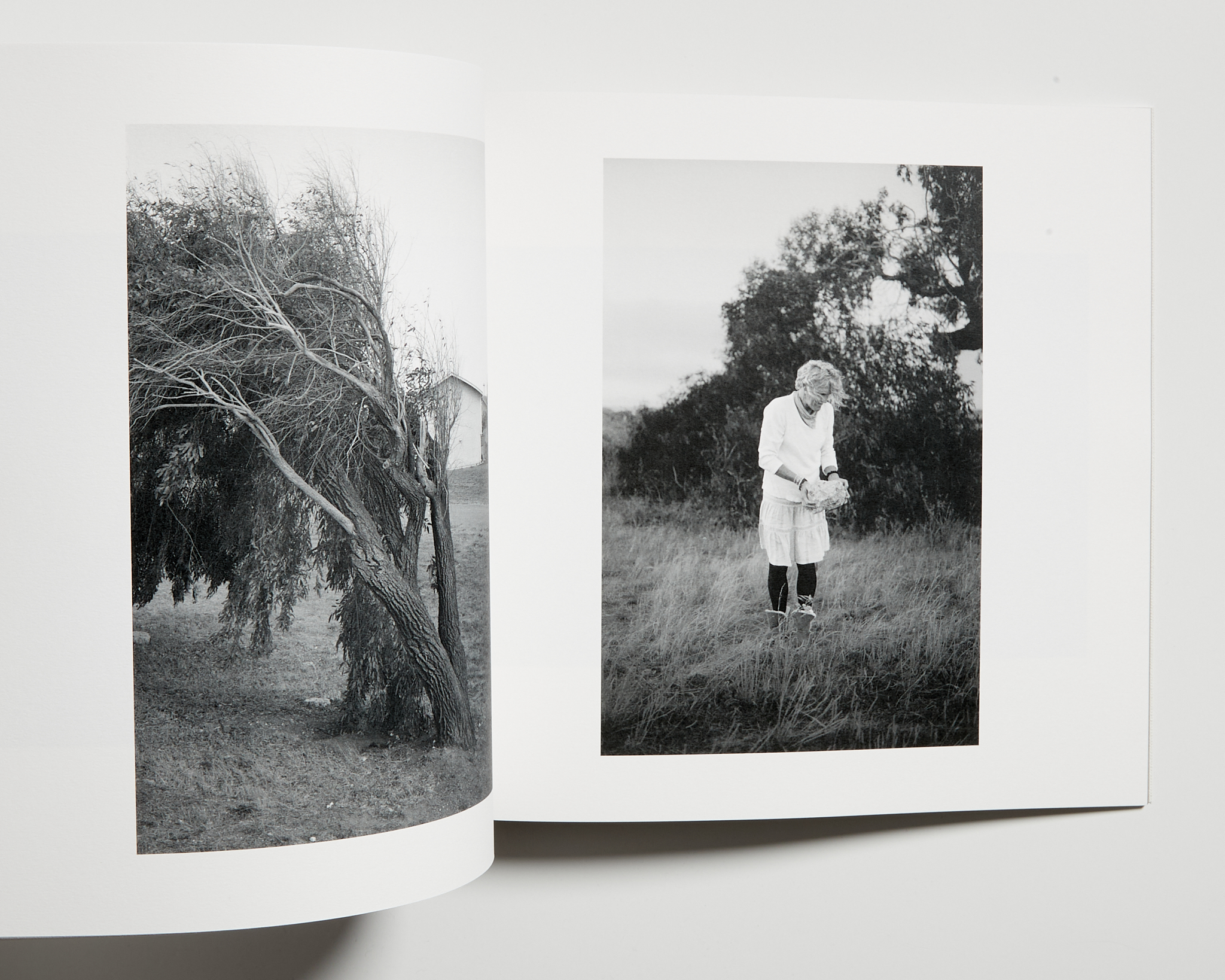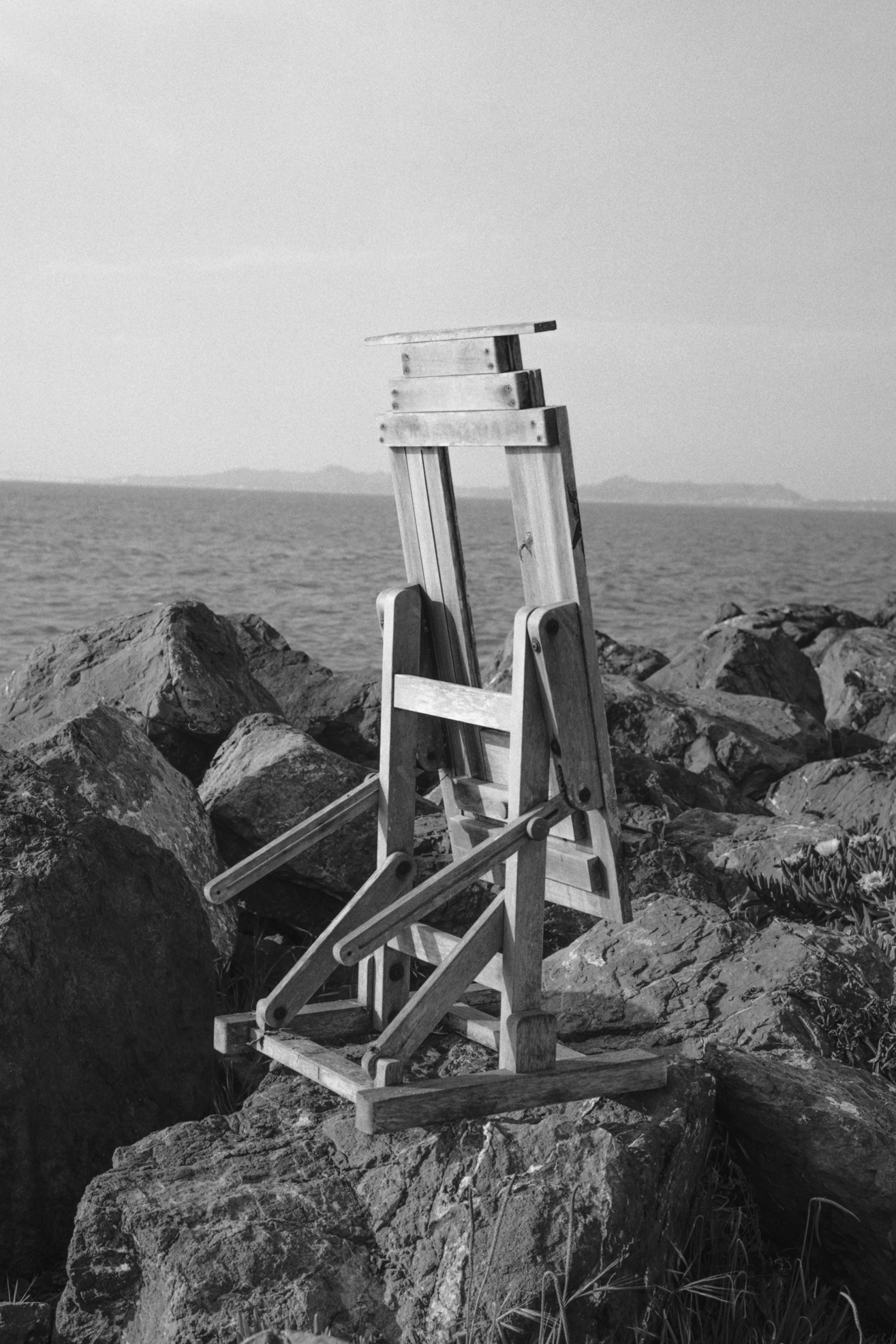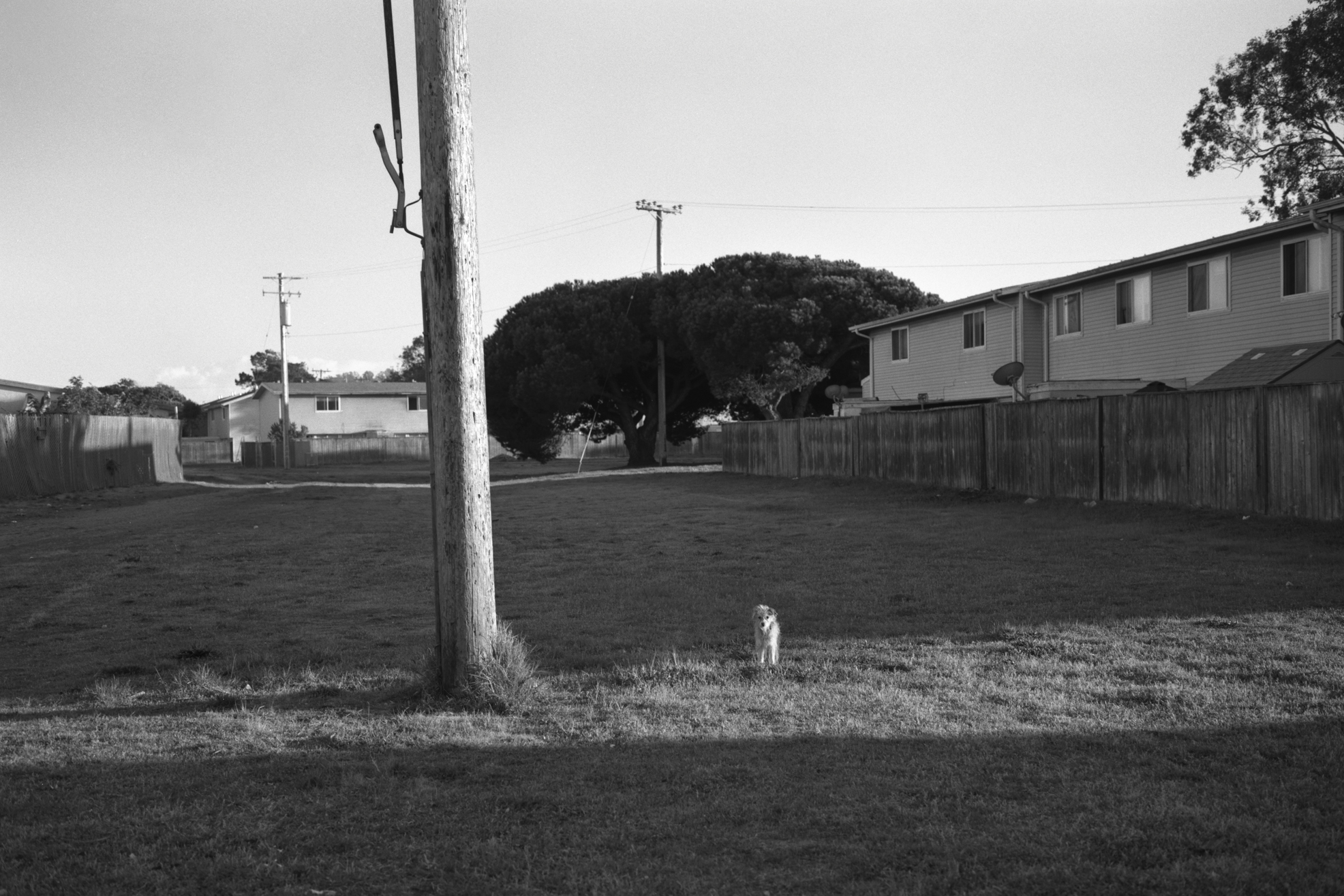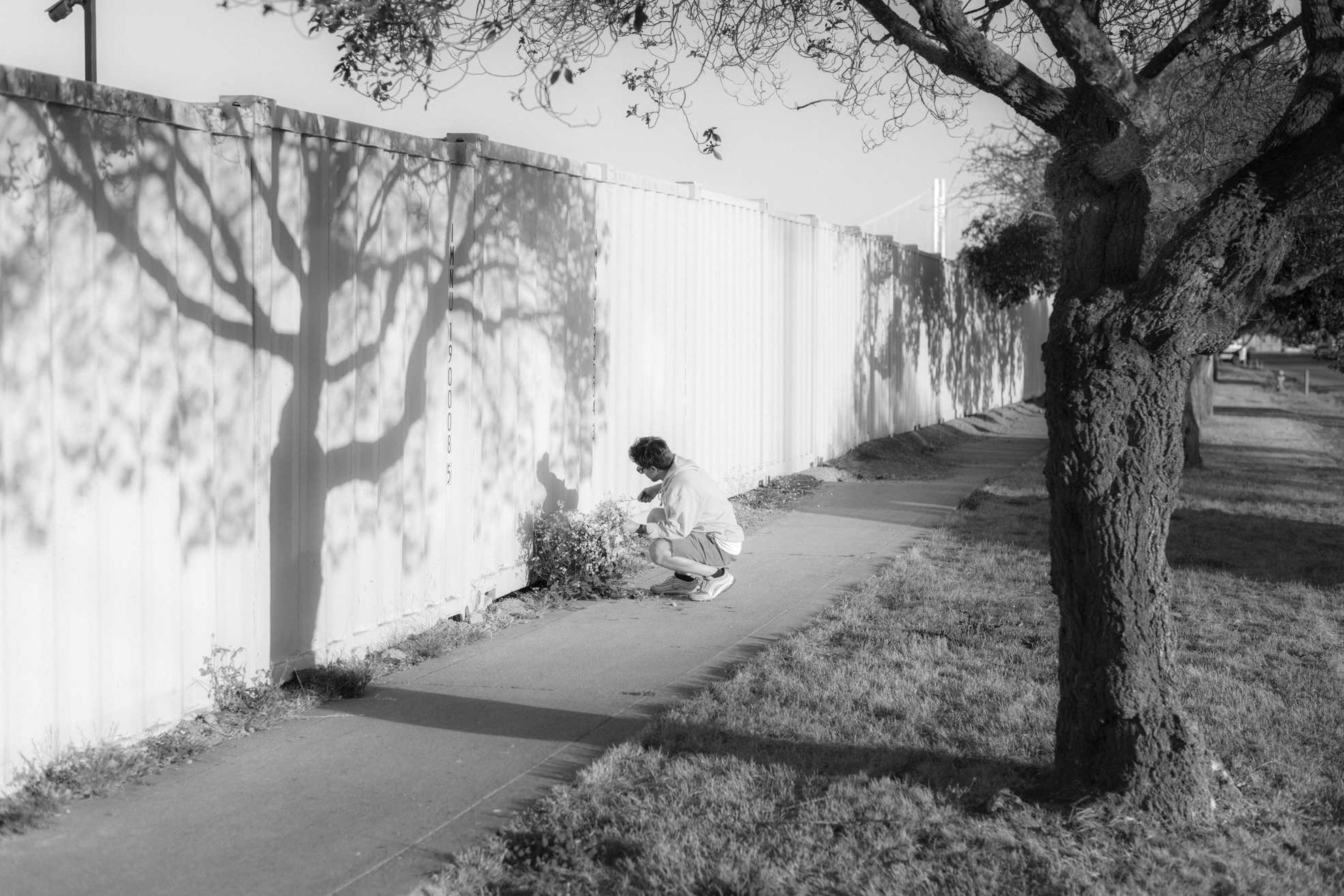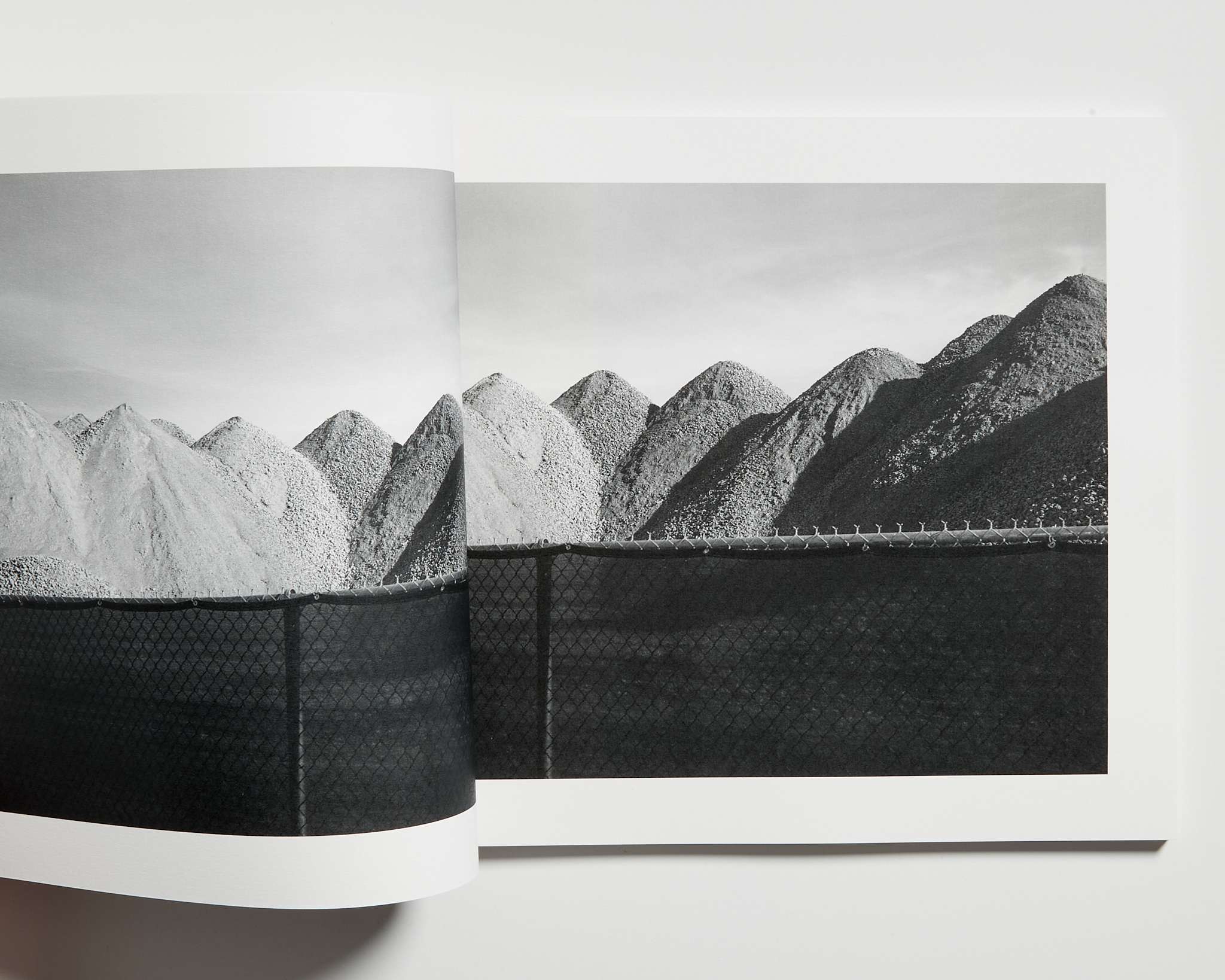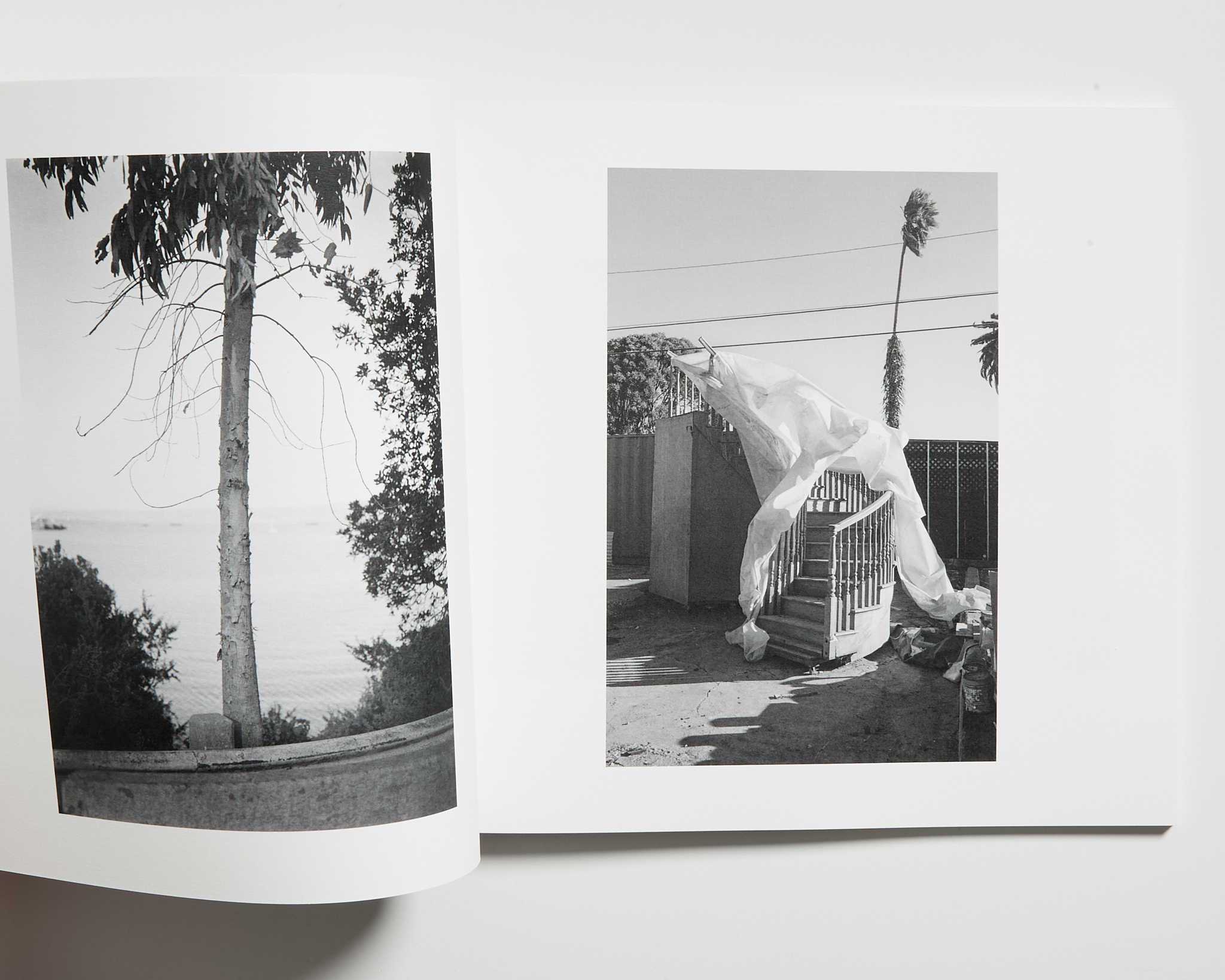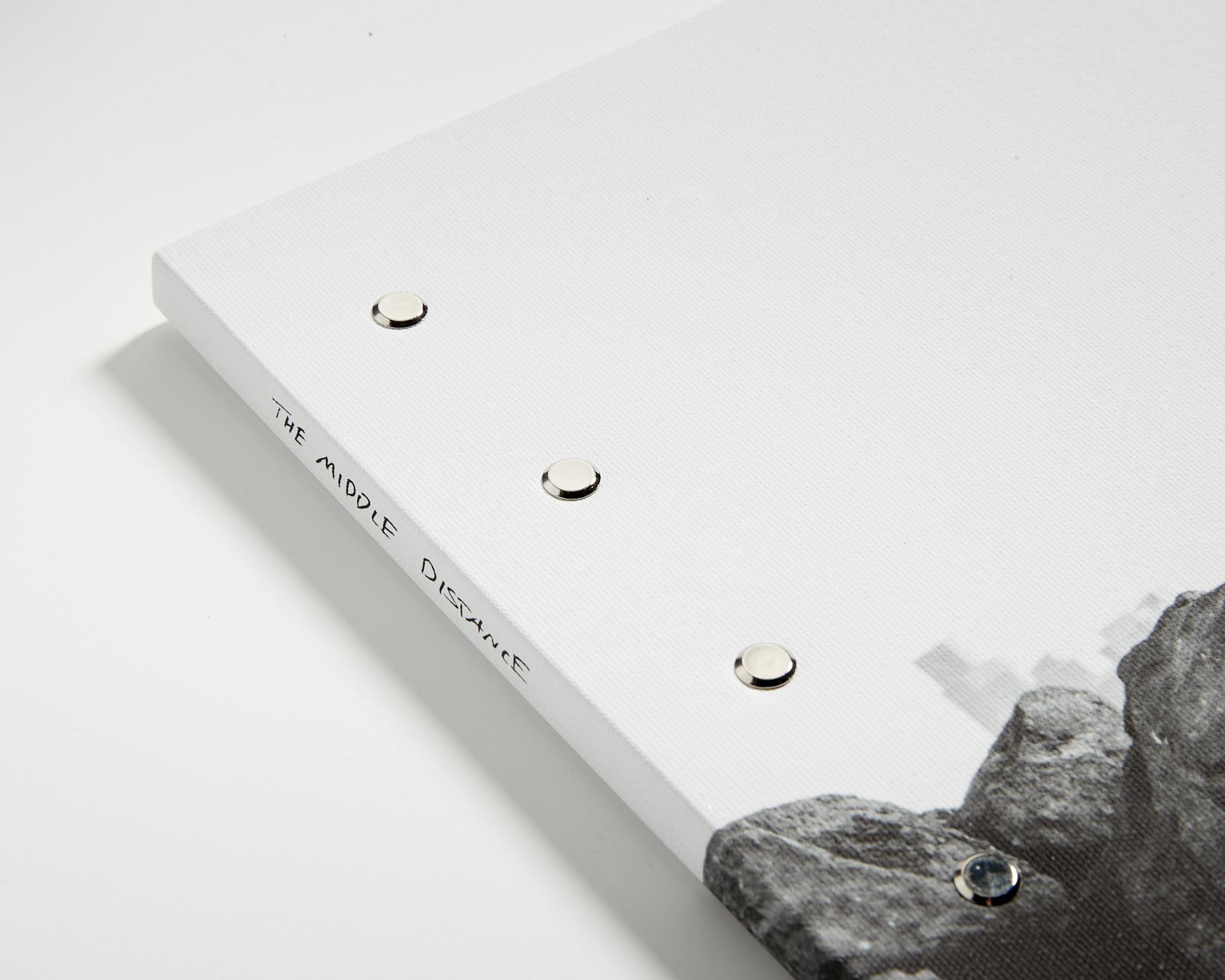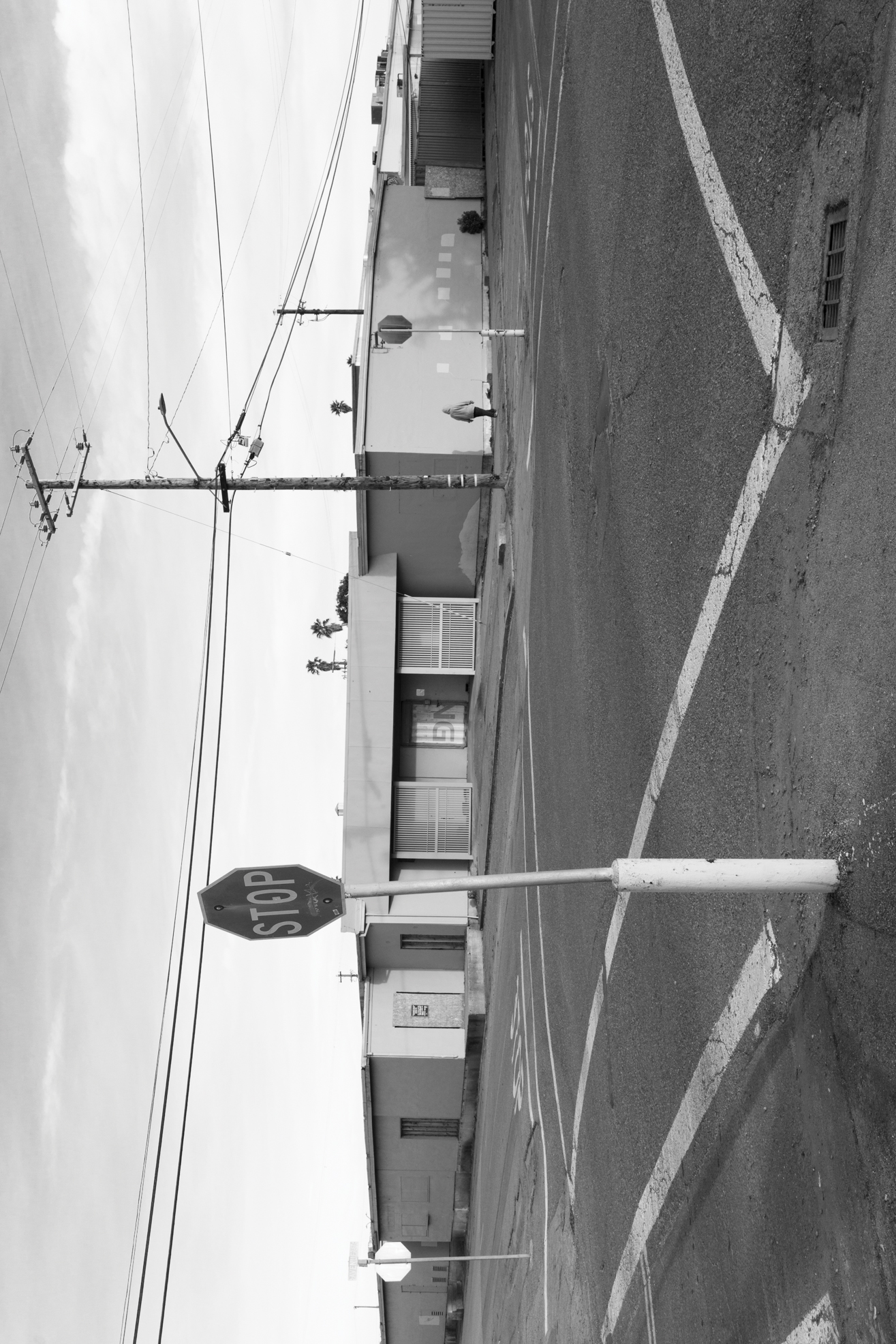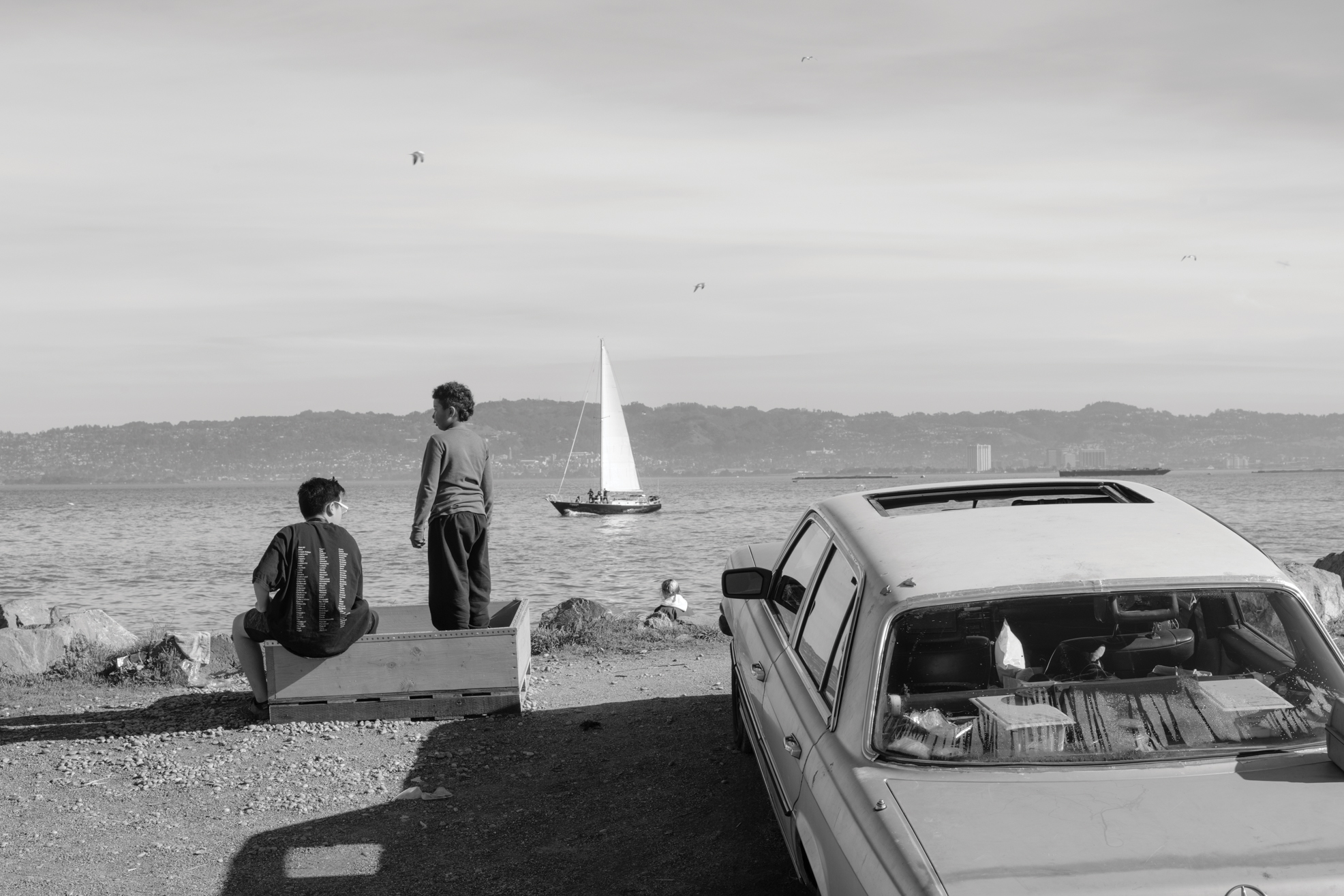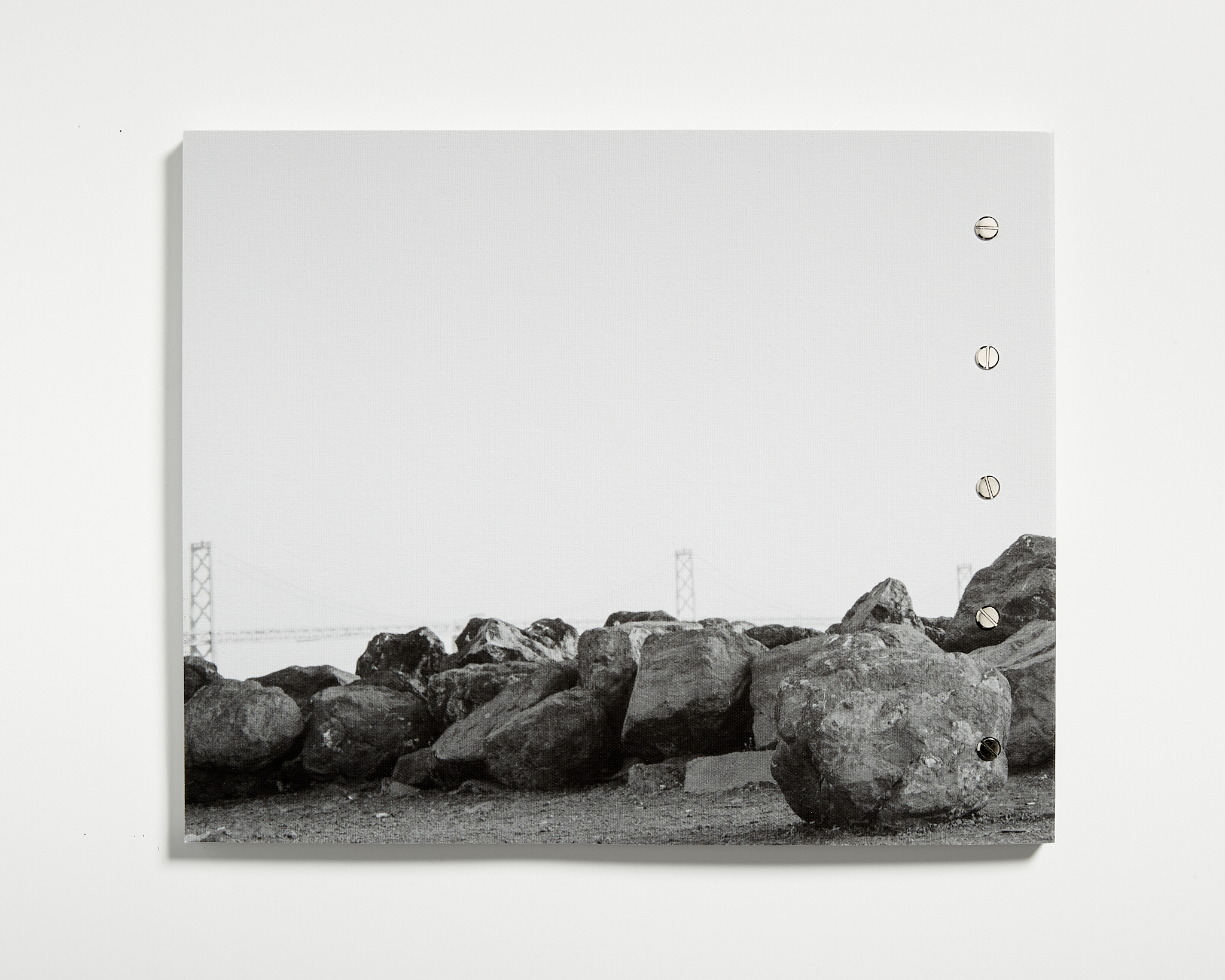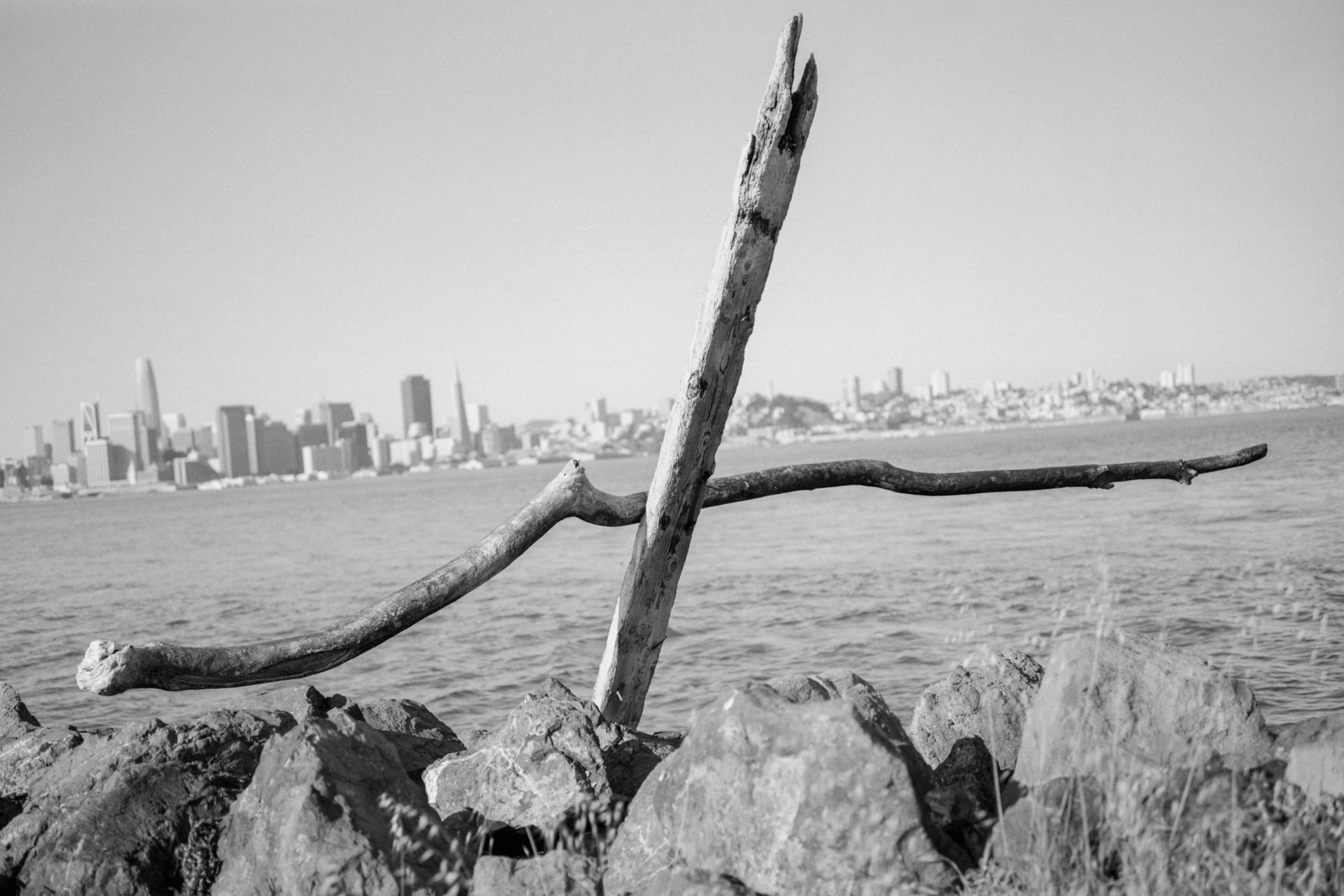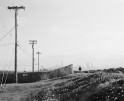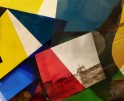Andrew Waits : The Middle Distance
The Middle Distance, self-published by Andrew Waits through his imprint Semi-Precious, is a photobook about in-between spaces, geographically, emotionally, and artistically. Treasure Island, with its layered histories and stalled redevelopment, became a mirror for a moment in Andrew’s life when everything felt suspended. The island sits amid a major metropolis yet somehow remains apart from it, and Andrew photographed it from that same stance.
I recognized that feeling immediately. There is a particular awkwardness to being mid-flux, not fully anchored but not drifting either, and these pictures hold that state with a quiet honesty.
Our conversation moves through the island’s complicated past, how personal changes shift how we see photographically, and what it means to build a photobook from a feeling rather than a fixed narrative. The Middle Distance sits in that suspended zone where things are shifting, not quite settled, and offers us space to simply slow down and look.
The following is a conversation between Tracy L. Chandler and Andrew Waits.
TLC: The title The Middle Distance evokes a space of in-betweenness, neither here nor there, and Treasure Island is both literally in the bay and metaphorically suspended between states of identity. But I am curious what “middle distance” means for you…What brought you to photograph Treasure Island?
AW: When I moved to the Bay Area at the end of 2017, I was commuting back and forth from Oakland to San Francisco for work. A large portion of that drive entails traveling across the Bay Bridge, which tunnels through Yerba Buena island of which the flat, artificial landmass of Treasure Island is connected. I’ve always been drawn to the different ways we use land and how we can learn and interpret what it says about our past and present values. So, I couldn’t help but be curious and began to regularly visit to explore and photograph its landscape.
TLC: I too have always wondered about this place as I passed through. Even though the name “Treasure Island” is very tempting, I never had a good enough reason to stop. It doesn’t feel like a destination, it sort of feels lost or stuck, without a purpose. As you began to visit did you learn much about the backstory of this place?
AW: Treasure Island was originally intended as the site of a municipal airport, and following its creation, it hosted the Golden Gate International Exposition, under the theme of “Pageant of the Pacific”. But after the attack on Pearl Harbor, the U.S. Navy recommissioned the island into a training and distribution center. It served as the berthing site for ships that had been contaminated with dangerous levels of radiation due to atomic testing in the Pacific. So in an effort to train personnel in radiological safety, courses were established on the island, further exposing the environment to dangerous levels of contamination.
In the late 1990s, the Navy officially closed down the Naval Station and transferred the island to the control of the City of San Francisco, and a consortium of nonprofit organizations advocated for the use of the former military housing, eventually becoming home to 2,500 residents, most of whom were low-income people of color. However, contrary to the Navy’s initial radiological assessment, contractors found hundreds of low-level radioactive objects in the housing area, leading to several sites being decommissioned and sowing distrust and fear among residents.
In 2011 the city approved a final redevelopment plan that included 8,000 housing units and 500,000 square feet of commercial space. This phase of the island was still beginning to take shape in 2017 with residents slowly being relocated and construction equipment becoming more ubiquitous.
TLC: How was this backstory interesting to you photographically?
AW: As I learned more about the history of the island, I became enamoured with the oddness of this place that was at once in flux, but also a time capsule for what preceded. There’s a quaint, bellicose beauty to the residential side of the island, yet it holds these strange contradictions. It boasts breathtaking views of the city skyline, yet lacks basic services for its community. It provides housing for low-income individuals, yet, for many years the soil was arguably unsafe. It was once the site of an elaborate exposition that drew thousands, and now most of its buildings lay in ruin. At first, I envisioned creating a book that tried to encapsulate the entire story of this place, but as the years passed, I became less interested in this kind of photographic project.
Part of this was due to aesthetic preferences, but mostly because of external circumstances. During the pandemic, I visited the island often, to walk and photograph. The idea of distance was very much in the conversation. Social distancing, staying six feet apart, not shaking hands, furthering political divisions, etc. At the same time, we were experiencing a series of devastating fires in California and I was reading a lot about “defensible space” as a measure to keep a home safe from fire. On top of it, the 10 year relationship that brought me to Oakland ended, leaving me at a crossroads. The majority of my friends were in Southern California, while my family was still back in the Northwest and I was on this little island in between the two.
TLC: You were in your own state of middle distance! How did that personal sense of in-between-ness shape the pictures themselves? Did you find yourself trying to get closer to something?
AW: At the beginning, I did feel a desire to immerse myself. But something about the place felt impenetrable — as if, no matter how much time I spent there, I would never truly feel like I belonged. Something that precipitated this feeling early on was getting mugged while photographing on TI. I was lucky I didn’t end up on the ground, or worse, but my new camera and several lenses were stolen, along with my keys, phone, wallet, and other belongings — leaving me stranded.
TLC: Damn! That’s scary and violating. I can imagine it was hard to go back. I know I would feel defensive, fearful, angry even and it’s hard to photograph from that space. I find photography requires a certain openness, receptivity. But at the same time maybe it’s the tension that pushes me toward subjects that matter.
AW: I had just spent nearly every day of the prior two years in Seattle, walking around and photographing with a camera hanging around my neck, and the thought of being in any kind of danger had never crossed my mind. So, it was a real wake-up call. I wasn’t invisible. I needed to take care of myself, show respect, and practice caution when photographing somewhere new and unfamiliar. I wasn’t happy that it happened, but it did shift my relationship to the place in a significant way — and I think that translated into the kind of pictures I started to make. It further deepened the outsider mentality.
Around mid-2023, I started to limit my visits to TI, feeling a lack of direction and boredom in what I was doing out there. I began folding some of the pictures into another, larger body of work I was making in the Bay Area at large. But a year later, I returned to the pictures with a different focus. The dots finally connected, and I saw a way forward with the work — one that eschewed investigation and understanding, and instead focused on expanding the idea of the in-between.
I created an edit that spoke strictly to this feeling of being apart — here, but not there. Because of that, I have a strange relationship to the work. I do like the pictures, but they lack intimacy; whatever tenderness or connection they depict can only be seen from afar. And because of that, the pictures are frustrating in some way. But that’s exactly the point I wanted to hammer at, so I held myself strictly to the idea.
TLC: I see and feel that remove when looking at these pictures. We’re always at arm’s distance, reading gesture and light as signs more than anything. When you came back to the work and began editing around that idea of distance, how did you approach sequencing? Was there a rhythm or logic that helped you express that feeling of distance? I noticed throughout the book there are diptychs that create not-quite panoramics, more like a jump cut where a piece of continuity is missing. They disorient me in a way that feels intentional.
AW: Those not-quite panoramas were intentional. The idea came about while I was designing the layout of the book. I was experimenting with different ways to make the spreads as impactful as possible. Because of the photograph’s native ratio and the book’s dimensions, I couldn’t extend an image across the entire spread without leaving a large margin. So I tried overlapping the images as a way to bridge that distance and allow the picture to cover the full width of the spread.
I ended up digging the effect because it extended the perceived distance between the two ends of the photograph and created a middle that felt artificially long. My hope was that it would prompt viewers to question the intentionality behind it, or at least subliminally evoke a sense of distance.
When it came to sequencing, I didn’t approach it as a traditional narrative with a beginning and end. Instead, I wanted viewers to feel as though they were roaming and exploring a place, discovering small moments of beauty or quiet curiosities. I wanted to convey how my relationship with TI mirrored the island’s own relationship to its surroundings.
TLC: I see this reflected in the book object itself. The dimensions are a very wide landscape, our eye is always traversing horizontally, but the book is bound with these sturdy brads anchoring the whole thing. What for you feels like the main anchor in the pictures themselves? Do you have a favorite image or one that serves as your thesis statement? Or is this all more about meandering between them?
I know you self-published this with your own imprint, Semi-Precious. Can you talk about the freedoms and pressures that come with that?
AW: I don’t feel like there’s a main anchor photograph in this work. I think it’s the culmination of them that interests me and how they work together to create an emotional tenor.
In regard to Semi-Precious, I’ve always enjoyed making books, and I’ve produced a couple of small editions as well as one-off artist books over the years. So, I decided to create a little imprint that I can start putting my own work and the work of other artists out under. The idea is to focus on smaller editions of 50-150, each with a handmade element to them. This first book took a bit longer to produce because I wanted to establish relationships with printers and vendors I could continue working with. I enjoy learning and having control over as much of the process as possible, and this model allows me that freedom. There are tradeoffs between self-publishing vs working with a publisher for sure. But in both cases, it’s not really a money-making venture, but rather a labor of love. With this model, I get to put more of myself into the final product, and I’m not left with a large edition that I need to constantly market and sell, since that tends to be my least favorite part of the process.
TLC: I relate so much to what you’re saying about self-publishing, especially the marketing. I always feel like there are two different Tracys at play, the dirtbag recluse who makes the work, and the one who has to go out, talk about it, and sell it. They’re wildly different parts of me, but they end up grounding each other.
I’m curious how that feels for you. When you put a book like The Middle Distance into the world, having conversations like this, getting feedback, watching how people respond, do you learn anything new about the work? Does that process shape how you think about what comes next?
AW: That definitely resonates with me. I’m in full dirtbag recluse mode when making work for sure, save for a few close friends I share with. But the process of putting out a book forces you to be visible and vulnerable. It’s a good reminder of how big the community is and how many people are making really great work. It can be overwhelming for sure, but also inspiring and propulsive.
The Middle Distance is available through Semi-Precious
Andrew Waits (b. 1983) is a photographer from the Pacific Northwest. He studied Political Science and Communications at the University of Washington and earned an MFA in Photography from the University of Hartford. His first body of work, Boondock, explored how survival shapes mobility, interconnection, and the idea of home. His first book, Aporia, examined rapid urbanization and its imprint on both the built environment and the collective psyche. The maquette for Aporia won the 2018 Fiebre Dummy Award and was later published by Dalpine Books. His newest self-published book, The Middle Distance, is available through his imprint, Semi-Precious. He currently lives in Oakland, California.
Follow Andrew Waits on Instagram
Tracy L Chandler is a photographer based in Los Angeles, CA. Her monograph A POOR SORT OF MEMORY is now available from Deadbeat Club.
Follow Tracy L Chandler on Instagram.
Posts on Lenscratch may not be reproduced without the permission of the Lenscratch staff and the photographer.
Recommended
-
Andrew Waits : The Middle DistanceDecember 20th, 2025
-
Photography Educator: Juan OrrantiaDecember 19th, 2025
-
Aaron Rothman: The SierraDecember 18th, 2025
-
Eli Durst: The Children’s MelodyDecember 15th, 2025
-
Paccarik Orue: El MuquiDecember 9th, 2025

